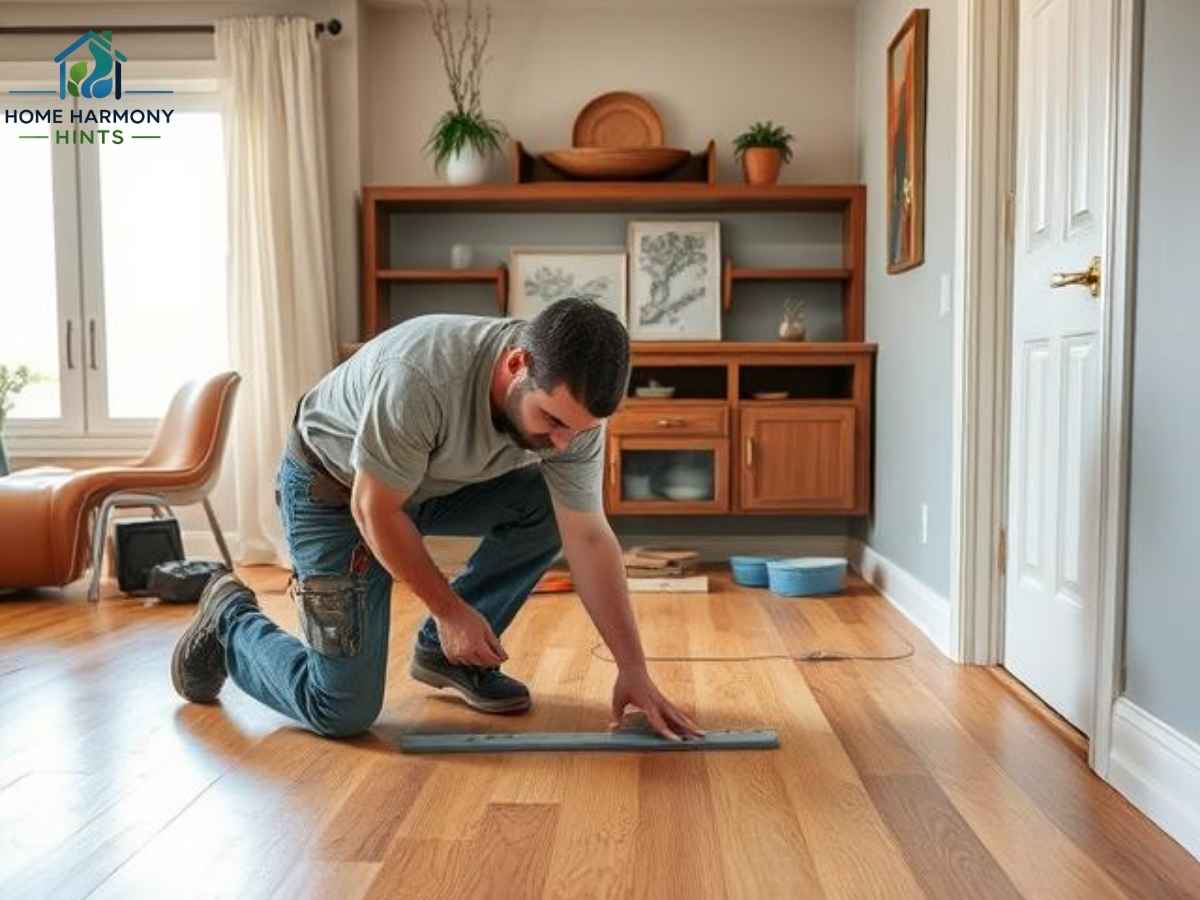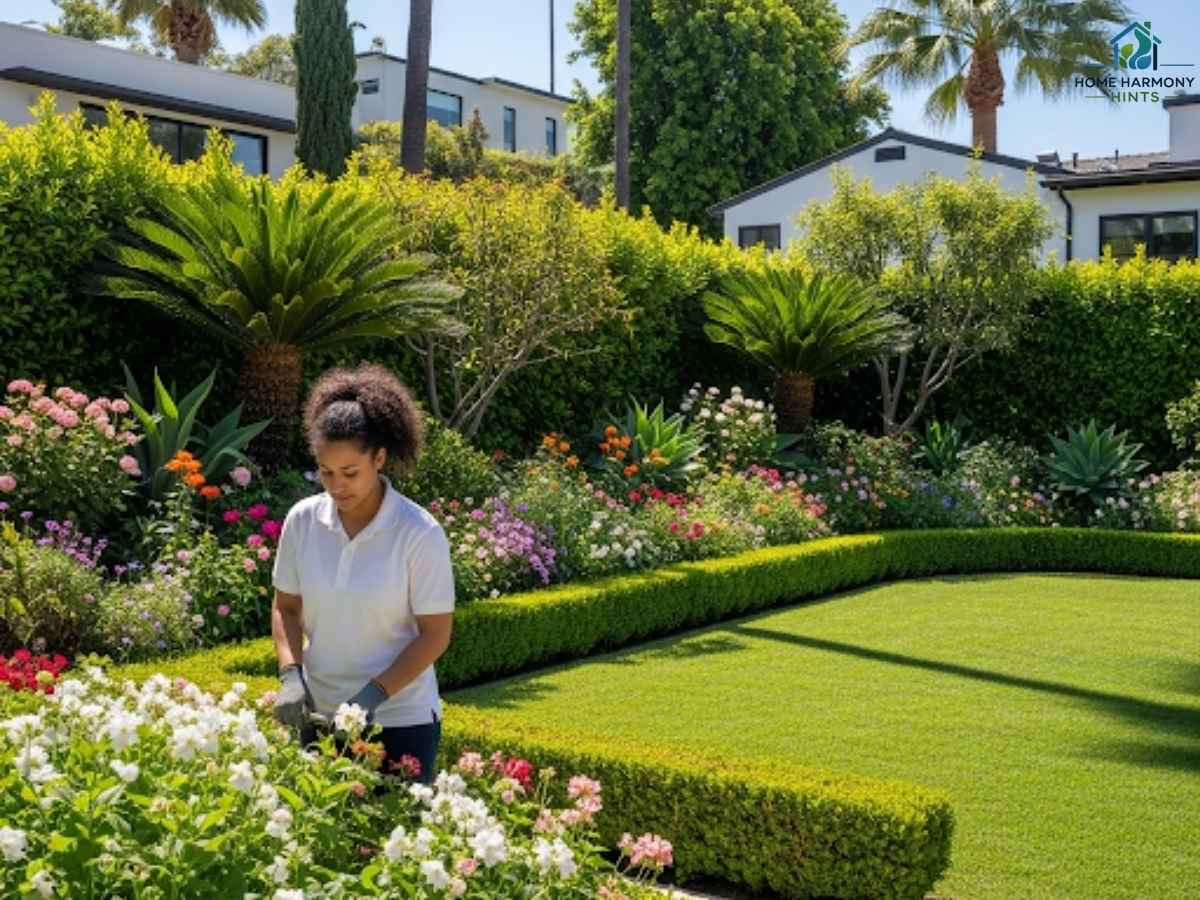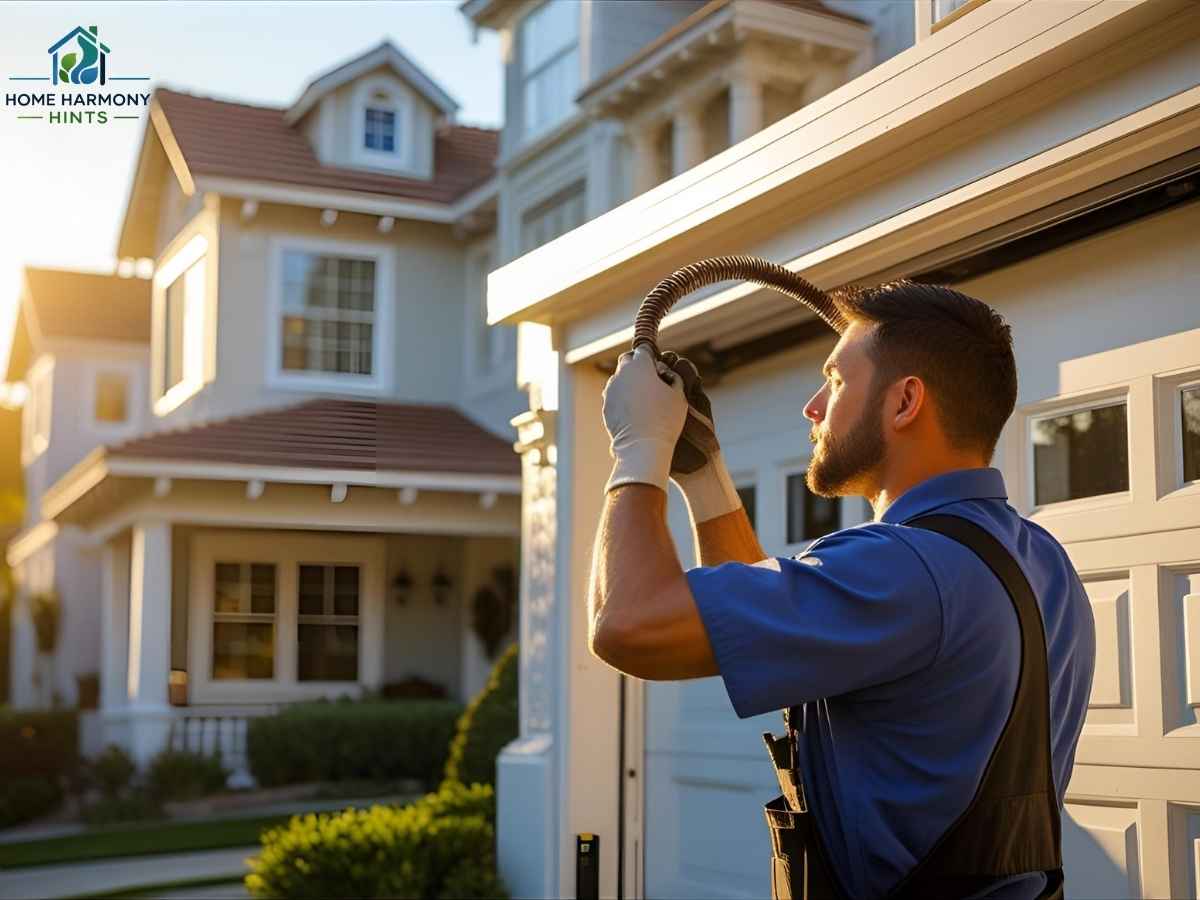Imagine stepping out onto your patio in Echo Park on a cool July morning, the scent of native sage wafting through the air, hummingbirds flitting between drought-tolerant blooms, and your water bill noticeably lower than last summer’s. This is the new face of Los Angeles landscaping in 2025—a blend of beauty, resilience, and resourcefulness. Whether you’re in Westwood, Highland Park, or the heart of the San Fernando Valley, sustainable landscaping is not just a trend—it’s a necessity shaped by LA’s unique climate, local policies, and neighborhood character.
Table of Contents
Why Sustainable Landscaping Is Essential in LA
Los Angeles is a city of microclimates. From the misty mornings of Santa Monica (ZIP 90401) to the sunbaked afternoons in Woodland Hills (ZIP 91367), temperatures can swing by 20°F or more in a single day. Add to this the ongoing drought, stricter water ordinances, and the ever-present risk of wildfires, and it’s clear why Angelenos are rethinking their yards.
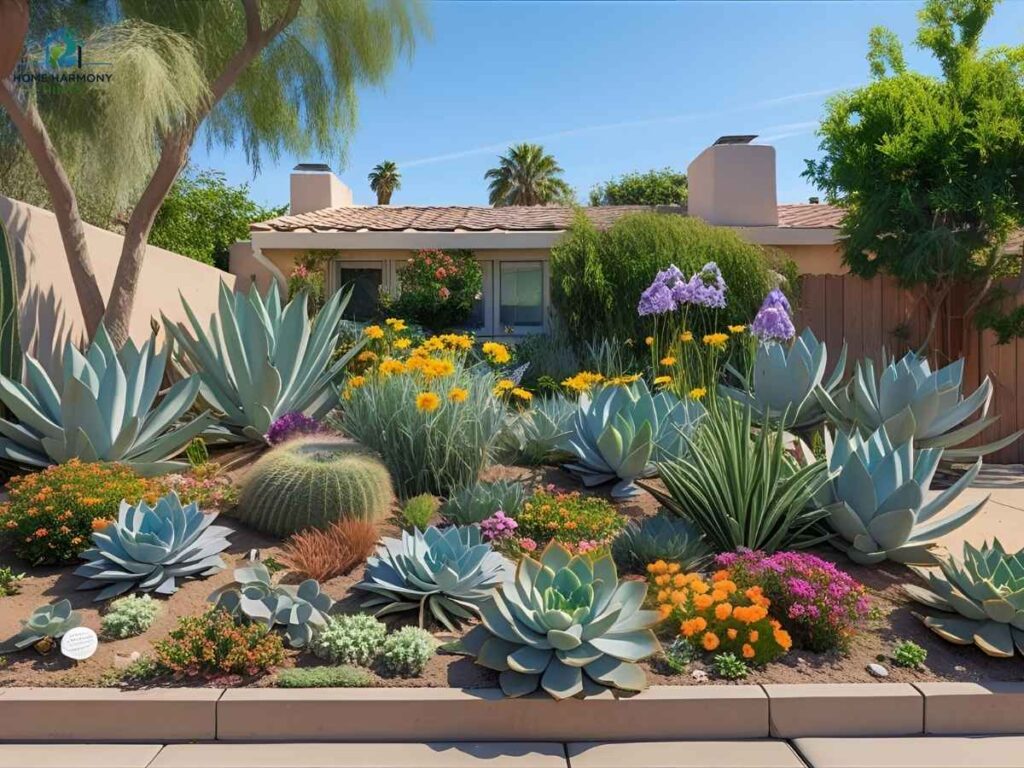
The city averages just 15 inches of rainfall a year, with 2025 bringing record-high temperatures and another round of mandatory water restrictions. The Los Angeles Department of Water and Power (LADWP) now limits outdoor watering to three days a week, and offers generous rebates for turf replacement and smart irrigation. Homeowners across neighborhoods are embracing sustainable landscaping not just for the savings, but for the chance to create beautiful, low-maintenance spaces that thrive in LA’s climate.
The LA Challenge: Water, Heat, and Wildfire
In 2025, Los Angeles faces a triple threat: drought, heat waves, and wildfire risk. The city’s Mediterranean climate means long, dry summers and short, rainy winters. East LA neighborhoods like Boyle Heights (ZIP 90033) often see hotter, drier conditions than coastal areas like Venice (ZIP 90291). Urban heat islands in dense areas like Koreatown (ZIP 90005) push summer highs above 95°F, while the Westside benefits from ocean breezes that keep things cooler.
Wildfires remain a constant concern, especially in hillside communities from Brentwood to Sunland-Tujunga. Sustainable landscaping isn’t just about saving water—it’s about creating defensible space, reducing flammable vegetation, and using fire-resistant plants and materials.
Five Drought-Tolerant Plant Schemes for LA Yards
Choosing the right plant palette is the cornerstone of sustainable landscaping in Los Angeles. Here are five water-wise schemes tailored for different microclimates and design styles:
1. California Native Meadow (Best for West LA and Coastal)
- Plants: California poppy, Carex pansa (meadow sedge), California lilac (Ceanothus), yarrow, and hummingbird sage.
- Design Tips: Mimic the rolling meadows of Malibu or Pacific Palisades with flowing grasses and bursts of color. Use mulch to retain moisture and suppress weeds.
- Water Needs: Very low once established. Drip irrigation recommended.
- Estimated Install Cost: $12–$18 per sq. ft.
2. Modern Succulent Oasis (Ideal for East LA and Hot Valleys)
- Plants: Agave, aloe vera, blue chalk sticks (Senecio), desert spoon, and red yucca.
- Design Tips: Group bold, architectural succulents with gravel or decomposed granite for a sleek, low-maintenance look. Add boulders for texture.
- Water Needs: Minimal. Occasional deep watering in summer.
- Estimated Install Cost: $15–$22 per sq. ft.
3. Mediterranean Pollinator Garden (Great for Central LA)
- Plants: Lavender, rosemary, Russian sage, salvia, and lantana.
- Design Tips: Attract bees and butterflies while evoking the hills of Tuscany. Use terracotta pots and permeable pathways.
- Water Needs: Low. Mulch and group plants by water needs.
- Estimated Install Cost: $14–$20 per sq. ft.
4. Woodland Shade Retreat (For North LA, San Fernando Valley)
- Plants: Toyon, coffeeberry, western redbud, Douglas iris, and coral bells.
- Design Tips: Create dappled shade with small native trees and underplant with shade-tolerant perennials. Ideal for yards with mature oaks.
- Water Needs: Moderate during establishment, then low.
- Estimated Install Cost: $16–$24 per sq. ft.
5. Edible Native Food Forest (Citywide, Especially South LA)
- Plants: California wild grape, elderberry, manzanita, native strawberries, and sage.
- Design Tips: Blend beauty with bounty. Integrate fruiting shrubs and herbs for a yard that feeds both people and pollinators.
- Water Needs: Low to moderate. Use rainwater capture where possible.
- Estimated Install Cost: $18–$26 per sq. ft.
Tip: Visit local nurseries like Theodore Payne Foundation in Sun Valley, Ricardo’s Nursery in Long Beach, or Green Thumb Nursery in Canoga Park for expert advice and top-quality drought-tolerant plants.
Microclimate Wisdom: West LA vs. East LA
Understanding your neighborhood’s microclimate is crucial for plant selection and irrigation planning. West LA, including areas like Santa Monica and Mar Vista, enjoys cooler, foggier mornings and milder summers thanks to the Pacific Ocean. Here, you can get away with more lush-looking natives and even some shade-loving plants.
In contrast, East LA neighborhoods such as El Sereno and Boyle Heights are hotter, drier, and more exposed. Choose tough, sun-loving plants, and consider adding shade structures or reflective mulch to keep roots cool.
The Valley (Encino, Sherman Oaks) experiences the widest temperature swings—hot, dry summers and chilly winter nights. Opt for plants with proven heat and cold tolerance, and mulch heavily to conserve soil moisture.
Real LA Success Stories: Sustainable Yards in Action
Echo Park’s Native Revival
When the Smith family moved into their 1910 bungalow near Elysian Park (ZIP 90026), the backyard was a patchy lawn that guzzled water. Inspired by a local LADWP workshop, they partnered with a landscape designer to install a California native meadow. Out went the grass, in came yarrow, blue-eyed grass, and poppies. They added a bioswale to capture rainwater from the roof and a drip system on a smart controller. Their water bill dropped by 45%, and their yard now buzzes with bees and butterflies. The Smiths even received a $5,000 rebate from LADWP for turf replacement.
Woodland Hills Modern Oasis
In the heat-prone San Fernando Valley, the Johnson-Hernandez family wanted a stylish, low-maintenance front yard. They chose a modern succulent scheme with agave, aloe, and decomposed granite, accented by native boulders. The local nursery helped them select plants that could handle 100°F summer days. By switching to drip irrigation and using a weather-based controller (rebated by LADWP), they cut water use by 60%. Their neighbors often stop to ask about the design, and the family enjoys year-round curb appeal with zero mowing.
Highland Park Edible Native Garden
Phan Yamada, a resident of Highland Park (ZIP 90042), transformed her sloped backyard into an edible native food forest. She planted elderberry, wild grape, and native strawberries, mulched with free wood chips from the city, and installed a rain barrel system. The garden now provides fruit for her family and habitat for local wildlife. She shares cuttings and gardening tips with neighbors, creating a mini-community of sustainable gardeners on her block.
Top 3 Sustainable Landscaping Service Providers in Los Angeles
1. Artscape Gardens
Website: artscapegardens.com
Based in central LA, Artscape Gardens specializes in California-friendly designs, native plant installations, and smart irrigation. Their team is known for clear communication and personalized service, making them a favorite for eco-conscious homeowners citywide.
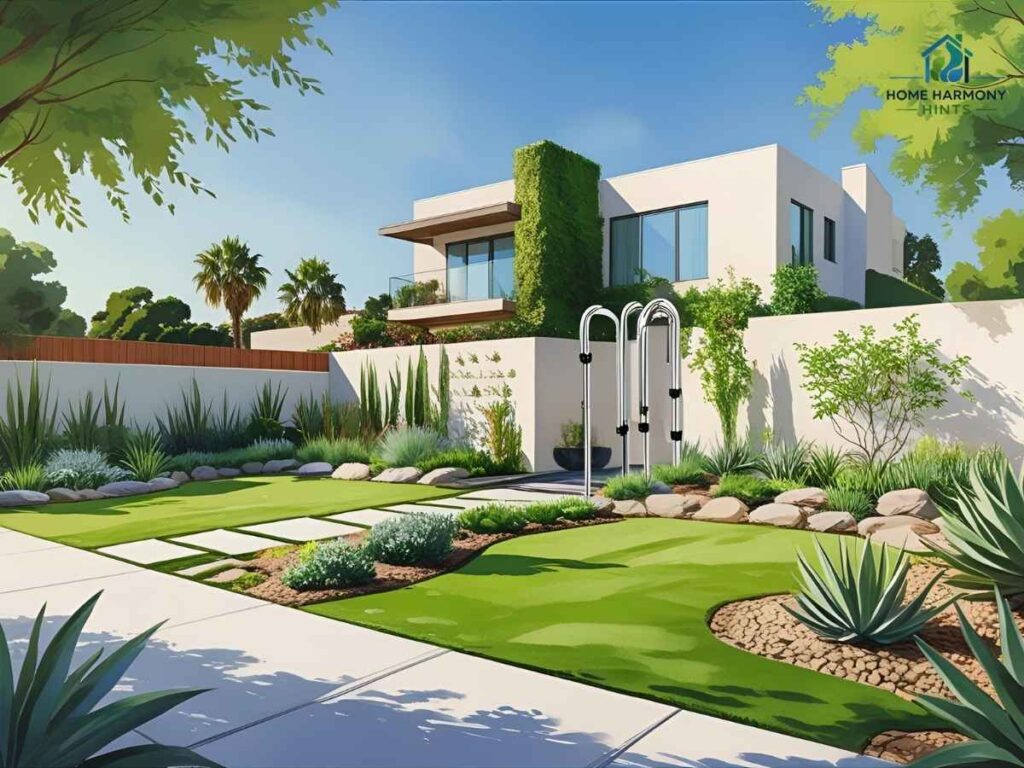
2. Green Republic Landscapes
Website: greenrepubliclandscapes.com
Serving neighborhoods from Sherman Oaks to Santa Monica, Green Republic offers full-service sustainable landscaping, from design and build to irrigation and tree care. Their expertise in energy-efficient and drought-tolerant solutions has made them a leader in LA’s green landscaping movement.
3. Pristine Gardenscape
Website: pristinegardenscape.com
Pristine Gardenscape is known for elegant, water-wise landscapes across the Valley and Westside. They offer garden design, hardscaping, and irrigation system upgrades, with a focus on seasonal color and long-term sustainability.
LADWP Rebates: Save Water, Save Money
The Los Angeles Department of Water and Power offers some of the most generous landscaping rebates in the country:
- Turf Replacement: $5 per sq. ft. for up to 5,000 sq. ft. (max $25,000 per household). Includes requirements for California Friendly® plants, mulch, and rain capture features.
- Smart Irrigation Controllers: Up to $200 per controller for weather-based systems.
- Rotating Nozzles: Up to $6 per nozzle.
- Rain Barrels: Up to $50 each, limit two per household.
- Free Trees: Up to 7 free trees per home through City Plants.
To qualify, you must apply and receive pre-approval before starting your project. Visit the LADWP residential rebates page for full details and to start your application.
Local Nurseries and Resources for Drought-Tolerant Plants
- Theodore Payne Foundation (Sun Valley, 10459 Tuxford St, 91352): The region’s best selection of California natives and expert advice.
- Ricardo’s Nursery (Long Beach, 6850 Atlantic Ave, 90805): Specializes in drought-tolerant trees, shrubs, and vines.
- Green Thumb Nursery (Canoga Park, 21812 Sherman Way, 91303): Family-owned, huge selection of water-wise plants and garden supplies.
- Bellefontaine Nursery (Pasadena, 838 S. Fair Oak Ave, 91105): Great for rare natives and personalized service.
Neighborhood Microclimate Tips
- West LA (Santa Monica, Venice, Westwood): Take advantage of cooler, foggier mornings. Use native grasses, ferns, and shade-tolerant perennials. Rain gardens work well here.
- East LA (Boyle Heights, El Sereno): Go for heat-loving succulents, cacti, and Mediterranean herbs. Mulch heavily and consider shade sails.
- San Fernando Valley (Woodland Hills, Encino): Select plants with proven heat and cold tolerance. Install deep-rooted natives and use drip irrigation to beat the heat.
- South LA (Leimert Park, Watts): Integrate edible natives and rainwater harvesting. Community gardens thrive here with the right planning.
Cost Estimates for Sustainable Yard Installations
| Scheme Type | Estimated Cost per Sq. Ft. | Typical 500 Sq. Ft. Yard |
|---|---|---|
| California Native Meadow | $12–$18 | $6,000–$9,000 |
| Modern Succulent Oasis | $15–$22 | $7,500–$11,000 |
| Mediterranean Pollinator | $14–$20 | $7,000–$10,000 |
| Woodland Shade Retreat | $16–$24 | $8,000–$12,000 |
| Edible Native Food Forest | $18–$26 | $9,000–$13,000 |
Note: LADWP rebates can offset a significant portion of these costs. Always get multiple quotes from local providers.
Local Tools, Permits, and Resources
- LADWP Turf Replacement and Rebates: ladwp.com/landscaping
- LA County Drought-Tolerant Plant Guide: LA County Waterworks
- City Plants Free Tree Program: cityplants.org
- Permit Info: Most landscape projects do not require permits, but hardscape, grading, and irrigation systems may. Check with LA City Planning for details.
Frequently Asked Questions (FAQ)
What are the best drought-tolerant plants for Los Angeles yards?
California poppy, ceanothus, agave, lavender, and yarrow are top choices. Local nurseries offer region-specific selections.
How do I qualify for LADWP turf replacement rebates?
Apply online and get pre-approval before removing your lawn. Your design must include approved drought-tolerant plants and a rain capture feature.
What’s the difference between West LA and East LA microclimates for landscaping?
West LA is cooler and foggier, allowing for more shade-loving plants. East LA is hotter and drier, so choose heat-tolerant, sun-loving varieties.
Are there local nurseries that specialize in sustainable plants?
Yes! Theodore Payne Foundation, Ricardo’s Nursery, and Green Thumb Nursery all specialize in drought-tolerant and native plants.
How much does it cost to install a sustainable landscape in Los Angeles?
Expect to pay $12–$26 per square foot, depending on the scheme. Rebates can cover up to $25,000 for qualifying projects.
